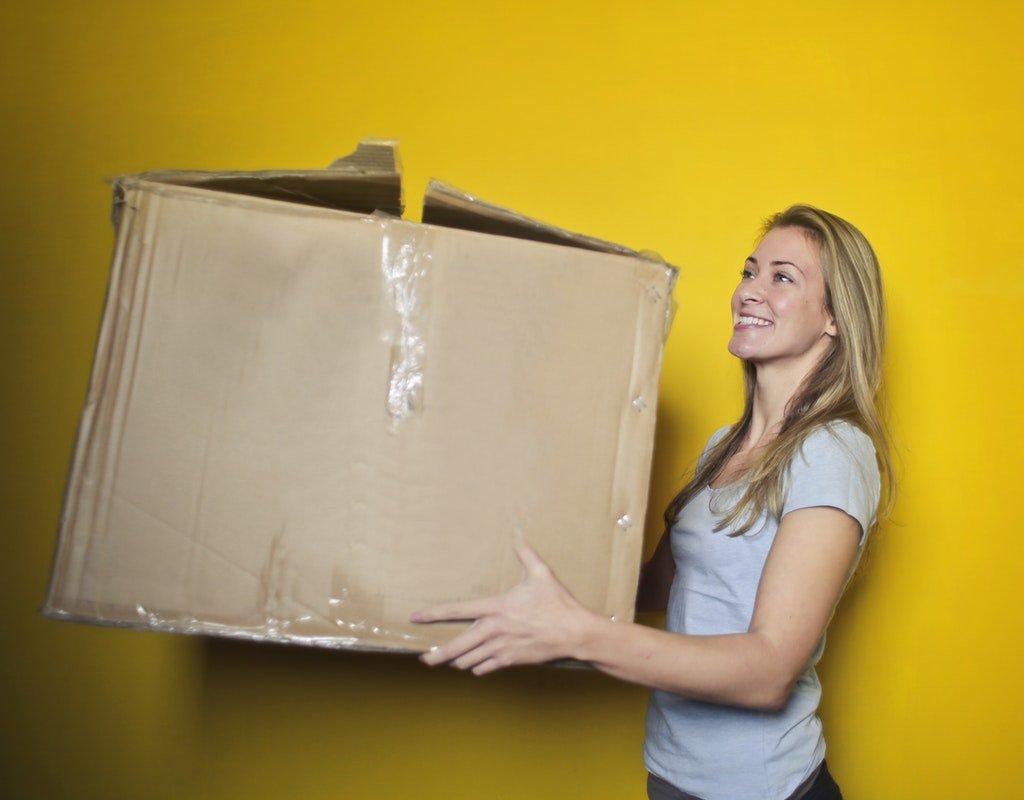
Have you ever received a giant box in the post and thought to yourself ‘Hmm, I don’t remember ordering anything this big…have I been shopping in my sleep again?!’
>Share this post<
by kooomo
December 10, 2016
Have you ever received a giant box in the post and thought to yourself ‘Hmm, I don’t remember ordering anything this big…have I been shopping in my sleep again?!’
Then you open the box to find that it actually consists of 50% packing peanuts, 30% inflated airbags, 10% tissue paper, and the remaining 10% is the small, non-fragile items that you purchased online (probably also wrapped in a plastic bag for good measure).
In 2017, packaging waste in Ireland grew 27% to over 7,000 tonnes for the year, equivalent to the waste generated by a town of 16,000 residents. Furthermore, a recent study by MacFarlane Packaging found that 41% of online brands are using too much packaging for their items.
With global eCommerce sales due to reach $4 trillion by 2020, there’s never been a more crucial time for brands to do their part to reduce waste and be as environmentally conscious as possible. Because not only does reduced packaging have a substantial effect on the environment, it also has a knock-on effect on overall shipping costs. Win-win!
Today, we’re looking at three ways that online retailers can be greener when it comes to utilising packaging and shipping materials as well as the brands that have taken major steps towards making eCommerce a more eco-friendly space.
Then you open the box to find that it actually consists of 50% packing peanuts, 30% inflated airbags, 10% tissue paper, and the remaining 10% is the small, non-fragile items that you purchased online (probably also wrapped in a plastic bag for good measure).
In 2017, packaging waste in Ireland grew 27% to over 7,000 tonnes for the year, equivalent to the waste generated by a town of 16,000 residents. Furthermore, a recent study by MacFarlane Packaging found that 41% of online brands are using too much packaging for their items.
With global eCommerce sales due to reach $4 trillion by 2020, there’s never been a more crucial time for brands to do their part to reduce waste and be as environmentally conscious as possible. Because not only does reduced packaging have a substantial effect on the environment, it also has a knock-on effect on overall shipping costs. Win-win!
Today, we’re looking at three ways that online retailers can be greener when it comes to utilising packaging and shipping materials as well as the brands that have taken major steps towards making eCommerce a more eco-friendly space.
Tip #1: Use recyclable and bio-degradable materials wherever possible
It goes without saying (but we’re going to say it anyway) – you should ALWAYS choose recyclable shipping materials (paper, cardboard, bubble wrap, corn-starch items, and biodegradable plastic) over their non-recyclable counterparts. Better yet – try to use 100% recycled material when shipping your products. Polystyrene (aka Styrofoam), though it can technically be recycled, typically can’t be done locally, so either ends up in a landfill, or unknowingly gets tossed in a recycle bin, where it could potentially slow down the entire recycling process by damaging the machines that sort materials. A survey by Dotcom Distribution found that 61% of online shoppers take into account how green the brand’s packaging is before they make a purchase. Therefore it’s vital that you choose your shipping materials wisely – not only for the greater good of the environment but also to enhance your overall customer experience. One brand that has nailed both is Puma, whose ‘clever little bag’ replaced the traditional shoebox in 2010. The non-woven bag, which holds shoes in place with a single piece of cardboard is responsible for saving 8500 tonnes of paper, 1 million litres of water, and 65% of cardboard material to date.
Tip #2: Size matters
If you want to ensure that your shipping materials are as eco-friendly as possible, you MUST start sizing to fit. The average package contains approximately 40% of empty space. Not only does this mean more emissions, but it also means greater overall costs to merchants. Every inch counts just as much as every kilogram, especially considering the fact that most shipping costs are now based on dimensional weight. What this means is that weight is no longer the dominant factor in calculating shipping rates – how much room a package will take up in a delivery truck is!
Not every brand is going to have the resources available to integrate package design technology that will optimise every last inch of packaging, but every online retailer can absolutely take small steps that will make a big difference. Simply put, there’s no such thing as a one-size-fits-all box in online retail. So if you’re shipping a small product to a customer, let’s say a wallet for example – does it really need to be in a double wall 305 x 220 x 220mm box? Probably not. ‘But what about products that need to have the protection that only polystyrene blocks can provide?’ you might wonder. Well, look at Dell, which developed bamboo cushioning back in 2009 as an alternative to plastic foam following customer complaints about their shipping boxes. The cushioning, which can be recycled or composted in the same way as paper has played a significant part in reducing box sizes by 10% as well as cutting 20 million pounds of packaging and an 8% reduction in greenhouse gas emissions.
Tip #3: Think inside the box
So assuming you have optimised the sizes of your shipping boxes, there’s another conundrum to consider – should you or shouldn’t you custom brand your shipping boxes? Well, over 40% of online consumers say that branded packaging makes them more likely to recommend products to friends and are more likely to share images on social media, so yes! You should absolutely consider custom branded shipping packaging for your products. However, if you’re going to pump considerable budget into creating custom branded packaging, you should try to ensure that it serves a greater purpose than brand awareness (or even *gasp*, customer experience). If you’re branding your shipping boxes, you should take the opportunity to remove a supplementary piece of material in your shipping box.
Take Farmacy as your source of innovation inspiration. The skincare brand constructed a 6-sided origami style box to hold their jars of ‘honey potion’ face masks. The box can then be unfolded to reveal the brand story and ingredient information, removing the need to include a separate insert into each product box. Try doing something similar with your own shipping boxes. Do you typically include a card containing your brand’s social media handles and official hashtags in each shipment to encourage user-generated content? Try printing this message on the inside of the box instead! And while you’re at it, always include a message asking your customers to get involved in making the world a greener place by recycling the box and/or various ways they can repurpose it!
It’s the responsibility of every online brand to ensure that they are doing their bit to reduce their carbon footprint. At Kooomo, we’re delighted to see so many of our partners and customers making strides towards increased sustainability through shipping and otherwise. La Sportiva recycles 50% of production waste through their adoption of the eco-sustainable ISO 14001 certification. Havaianas donates 7% of the proceeds from their IPE range to the conservation of Brazilian flora and fauna projects. Butlers Chocolates locally source packaging to reduce the amount of product materials used.
As far as shipping goes, who knows – maybe one day brands will somehow be able to get orders to customers without the need for packaging. But until then, every little change can make a big difference. Maybe that is removing a single non-essential piece of packaging from your shipments. Or maybe it means altering the sizes of your shipping boxes. Whatever that change may be, any change really is better than no change at all.
As far as shipping goes, who knows – maybe one day brands will somehow be able to get orders to customers without the need for packaging. But until then, every little change can make a big difference. Maybe that is removing a single non-essential piece of packaging from your shipments. Or maybe it means altering the sizes of your shipping boxes. Whatever that change may be, any change really is better than no change at all.
More to explore
Here’s an overview of the latest improvements that are now available in the Kooomo platform.
In the next few years, we are foreseeing an impressive increase for the global retail industry. While this can be beneficial for the global eCommerce industry, it also means that there will be more competition, as well.

 en
en 

